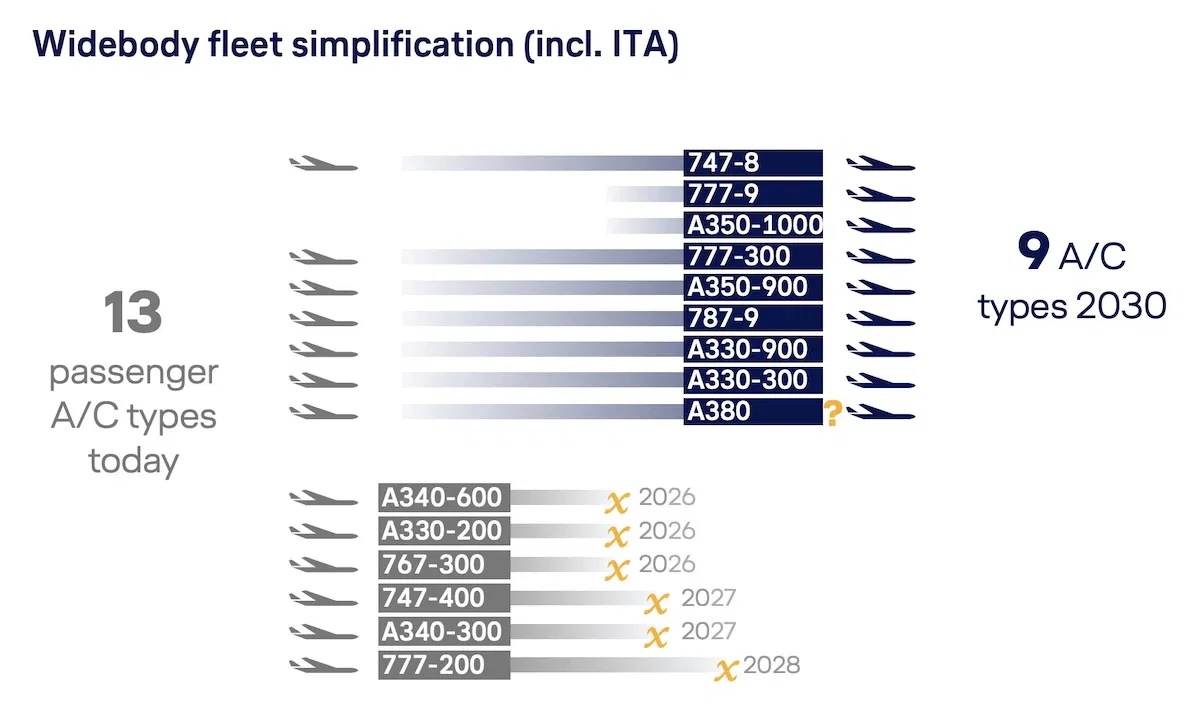Lufthansa To Retire Iconic Jets, Slash Thousands Of Jobs

A sweeping shake-up is underway at the Lufthansa Group, with major cutbacks to both its fleet and staffing planned for the coming years.
Cutbacks to Lufthansa Group Fleet and Workforce
Lufthansa Group is preparing for a leaner future, trimming redundant aircraft types and shedding roles, especially in corporate and administrative sectors, as it pivots toward a more efficient, AI-augmented structure and integrated group operations.
Fleet Simplification, Aircraft Phasing Out
Lufthansa Group’s fleet renewal plan includes retiring six long-haul types by 2030. Below is a breakdown of retirements (by year) that are slated for the next few years:
| Aircraft Type | Retirement Year | Current Lufthansa Group Operators |
|---|---|---|
| Airbus A340-600 | 2026 | Lufthansa |
| Airbus A330-200 | 2026 | Discover / ITA |
| Boeing 767-300ER | 2026 | Austrian |
| Airbus A340-300 | 2027 | Lufthansa / Swiss |
| Boeing 747-400 | 2027 | Lufthansa |
| Boeing 777-200ER | 2028 | Austrian |

Meanwhile, the types expected to remain (or be ramped up) toward 2030 include:
- Airbus A350-900 — core new long-haul type, with deliveries ongoing.
- Airbus A350-1000 — joining the fleet later in the decade.
- Boeing 787-9 — set to replace older jets, with deliveries already underway.
- Boeing 747-8 (pictured above) — to remain, retrofitted with new Allegris cabins.
- Boeing 777-9 — delayed but expected to replace some 747-400 capacity.
- Airbus A330-300 — consolidated within Discover and other group carriers.
- Airbus A320 family (including A320neo) — backbone of the short-haul fleet.
Notice anything missing? The A380-800 is still under review; it isn’t clear how long it will remain in the fleet.
Delivery delays of the Dreamliner and next-generation 777 leave all of this highly tentative: I can see these dates being pushed back, perhaps several years.
Workforce Cuts, AI Growth
Parallel to the fleet pruning, Lufthansa will reduce approximately 4,000 positions by 2030, mostly in Germany and centered in administrative, support, and back-office roles.
The strategy is to automate tasks, consolidate duplicated functions across the group (Lufthansa, Swiss, Austrian, Brussels, Discover), and apply AI tools to streamline planning, scheduling, procurement, and customer service. The carrier expects that many of today’s “middle layers” could be supplanted by digital platforms or shared group systems.
That said, Lufthansa also intends to retain or hire in key operational and technical areas: aircraft maintenance (Lufthansa Technik), ground operations, engineering, and digital/AI teams.
Moreover, the narrower fleet architecture (fewer aircraft types) helps reduce training, maintenance, and parts overhead, making human resources more flexible and reducing redundancy over time.
AI replacing jobs in the years ahead will hardly be unique to the Lufthansa Group.
CONCLUSION
As much as I hate to see four-engine aircraft retired, these changes are reasonable. The days of fuel-thirsty A340s and 747-400s are numbered, and simplifying the fleet will help Lufthansa operate more efficiently and reliably. Likewise, trimming overlapping jobs and embracing AI-driven efficiencies make sense in theory, even though the human cost is regrettable.
Yet there is another issue that should not be ignored: leadership. The Lufthansa Group has struggled for years with execution, labor relations, and customer experience, all while expenses tied to human capital have ballooned. A streamlined fleet and a leaner workforce may buy time, but real transformation may also require fresh leadership at the top to chart a more effective course forward…you can read between the lines.
image: Lufthasna